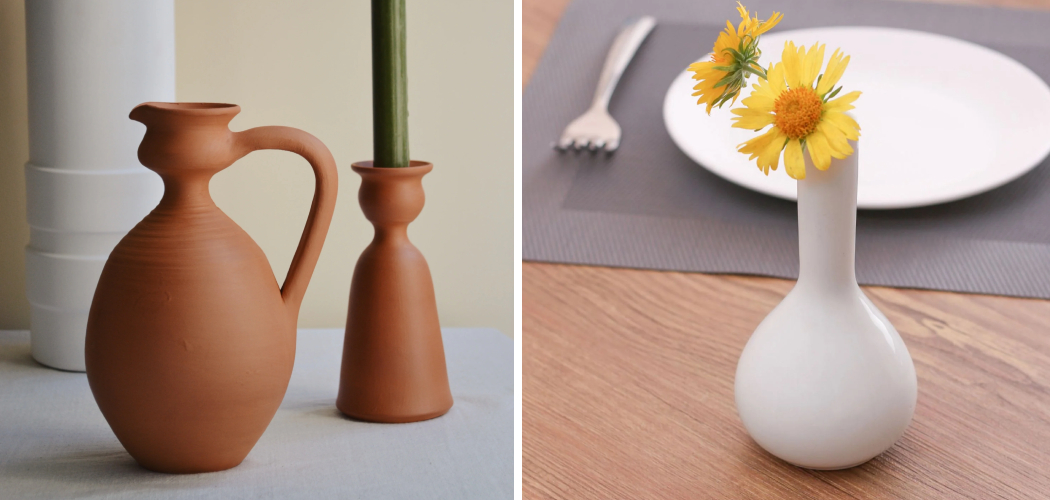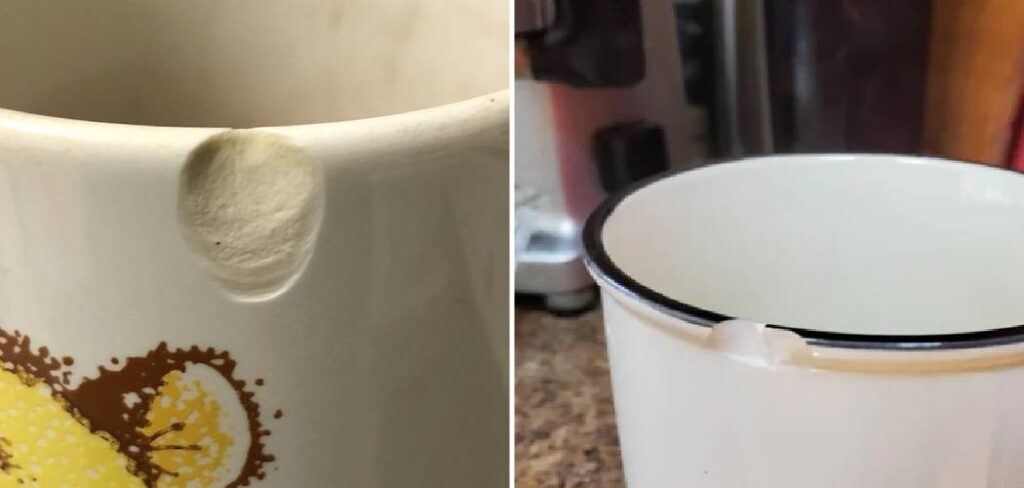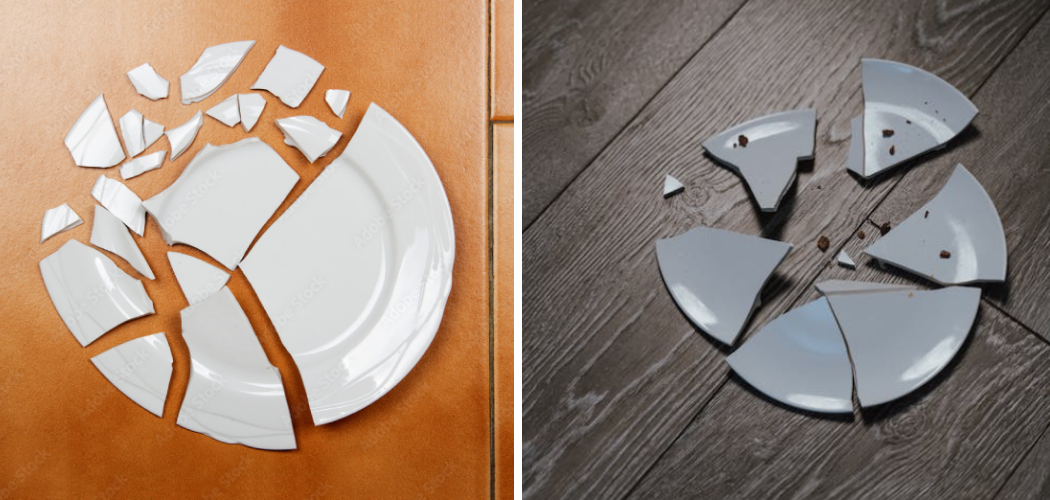Repairing a missing piece of ceramic is a skillful endeavor that can restore the beauty and functionality of cherished items. Whether it’s a broken vase, a chipped figurine, or a missing fragment from your favorite ceramic piece, the process of mending involves precision and patience. In this comprehensive guide, we will explore how to repair a missing piece of ceramic, from gathering the necessary tools and materials to executing the restoration with finesse.

Understanding the type of ceramic, be it porcelain, earthenware, or stoneware, is paramount in choosing the right repair method. From epoxy adhesives to clay-based fillers, we’ll navigate the various techniques, ensuring that your repaired ceramic not only regains its structural integrity but also preserves its aesthetic appeal. Join us on a journey of craftsmanship as we unlock the secrets to seamlessly repairing missing pieces of ceramic and breathing new life into your treasured items.
Table of Contents
List of Materials Needed:
- Broken ceramic piece
- Two-part epoxy resin adhesive
- Mixing cup and stick
- Sandpaper (120, 220, 320 grit)
- Paper towels or rags
- Acetone or rubbing alcohol
- Disposable gloves
- Toothpicks or small brush for applying adhesive
- Clamps or heavy books
- Paint (if needed)
Ensuring Proper Safety Gear
After cleaning the damaged area of the ceramic piece, it’s important to take necessary safety precautions while attempting to repair it. This includes wearing appropriate safety gear such as gloves, protective eyewear, and a face mask.
Gloves will protect your hands from any potential sharp edges or glass shards that may be present on the ceramic piece. Protective eyewear will prevent any debris from getting into your eyes while working with the piece. A face mask will protect you from inhaling any harmful dust or particles that may be released during the repair process.
Choosing the Right Adhesive
Before beginning the repair, it’s important to choose the right adhesive for the job. There are a variety of adhesives available such as super glue, epoxy, and ceramic-specific adhesives. It’s important to read the instructions and select an adhesive that is suitable for the type of ceramic piece you are repairing.
10 Steps How to Repair a Missing Piece of Ceramic
1. Gather the Necessary Supplies
The first step to repairing a missing piece of ceramic is to gather the necessary supplies. You will need an epoxy adhesive, a putty knife, fine-grit sandpaper, and a damp cloth. Make sure you have all the supplies before beginning the repair process.
2. Clean the Broken Area
Once you have gathered the necessary supplies, it’s time to clean the broken area of your ceramic piece. Use a damp cloth to remove any dirt or debris that may be stuck in the broken area. This will help ensure that your repair job is successful.
3. Apply Epoxy Adhesive

Next, use your putty knife to apply a thin layer of epoxy adhesive to both sides of the broken area. Make sure that you spread it evenly and that you cover all exposed surfaces. Allow the epoxy adhesive to dry for at least 24 hours before moving on to the next step.
4. Sand Down Uneven Edges
After allowing your epoxy adhesive to dry for 24 hours, use fine-grit sandpaper to sand down any uneven edges or bumps in your ceramic piece. This will help ensure that your repair job looks as professional as possible when it is finished.
5. Reattach Missing Piece
Once you have finished sanding down any uneven edges or bumps in your ceramic piece, it’s time to reattach the missing piece of ceramic back into place using more epoxy adhesive and a putty knife. Make sure that you press firmly so that all surfaces are sealed together properly and securely.
6. Smooth Out Surfaces
After reattaching your missing piece of ceramic back into place with epoxy adhesive, use a damp cloth or paper towel to smooth out any rough surfaces or ridges created by applying too much pressure while pressing down with your putty knife during Step 5 above. This will help make sure that everything looks neat and professional when finished with this project!
7. Allow Epoxy Adhesive To Dry
Once again, allow your epoxy adhesive plenty of time (at least 24 hours) to dry completely before moving on with this project! This will help ensure that everything stays secure and won’t come apart easily once this project is complete!
8. Sand Down Any Rough Surfaces Again
After allowing enough time for the epoxy adhesive used in Step 6 above to dry completely, use fine-grit sandpaper one more time over any rough surfaces or ridges created by applying too much pressure while pressing down with your putty knife during Step 5 above (if needed). This will help make sure that everything looks neat and professional when finished with this project!
9. Polish Ceramic Piece

Now it’s time for one final step: polishing off all rough edges left behind from Steps 6 through 8 above! Use a polishing cloth or buffer wheel (depending on what type of ceramic piece you are working on) over any rough areas until they are smooth and even with surrounding areas once again!
10. Enjoy Your Repaired Ceramic Piece
Congratulations – you’ve just successfully repaired a missing piece of ceramic! Now sit back and enjoy admiring your handiwork – knowing full well that no one else can tell which part was replaced due to all of your hard work!
Things to Consider When Repairing a Missing Piece of Ceramic
Ceramic is a popular material used for making various household items such as dishes, vases, tiles, and decorative pieces. However, ceramic objects can easily break or chip, leaving behind missing pieces that can be both unsightly and functionally problematic. Fortunately, repairing a missing piece of ceramic is possible with the right tools and techniques. In this guide, we will discuss the things you should consider when repairing a missing piece of ceramic.
Assess the Damage
The first step in repairing a missing piece of ceramic is to assess the damage. Take a close look at the broken edges and determine if any pieces are entirely missing or if they can be salvaged. If there are small shards or fragments that have broken off, gather them carefully and keep them in a safe place. These pieces may be used in the repair process later on.
Consider the Material
Ceramic can come in various forms, including earthenware, stoneware, and porcelain. Each type of ceramic has its unique properties and requires different techniques for repair. For instance, while earthenware can be easily repaired with epoxy glue, porcelain may require special adhesives and firing in a kiln. Therefore, it is essential to identify the type of ceramic you are working with before attempting any repairs.
Choose the Right Adhesive

Choosing the right adhesive is crucial when repairing a missing piece of ceramic. Epoxy glue is often recommended for repairing ceramic as it is strong and dries clear. However, make sure to use a high-quality epoxy glue that is specifically designed for ceramic repairs. For delicate or valuable pieces, it may be best to consult a professional for the most suitable adhesive.
Common Mistakes to Avoid When Repairing Ceramic
Ceramic is a versatile material that is used in various applications, such as building materials, household items, and decorative pieces. However, even the most durable ceramics can get damaged or broken over time. If you find yourself with a missing piece of ceramic, it’s important to know how to properly repair it.
While repairing ceramic can seem like a simple task, there are some common mistakes that people make that can actually worsen the damage or compromise the integrity of the piece. In this guide, we will discuss some of these common mistakes and how you can avoid them when repairing ceramic.
Not Using the Right Materials
One of the most important aspects of repairing ceramic is using the right materials. Many people make the mistake of using regular super glue or generic adhesives to repair their broken ceramic pieces. However, these types of adhesives are not designed for use on ceramics and may not provide a strong enough bond.
Instead, opt for specialized ceramic adhesives such as epoxy or cyanoacrylate glues which are specifically formulated for bonding ceramics. These adhesives have a higher strength and better resistance to heat, water, and chemicals. Additionally, make sure to use the correct type of adhesive for the specific type of ceramic you are repairing.
Rushing the Drying Process
Repairing ceramics requires patience, as rushing the drying process can result in a poorly bonded repair or even further damage. When using adhesives, make sure to follow the recommended drying time on the packaging. This will ensure that the adhesive has enough time to fully dry and bond with the ceramic.
Additionally, make sure to apply pressure on the damaged area while the adhesive is drying. This will help create a strong bond between the pieces and prevent any gaps or weak spots in the repair.
Ignoring Surface Preparation
Another common mistake when repairing ceramic is ignoring surface preparation. Before applying any adhesive, make sure to clean and dry the surfaces of the broken pieces. Any dirt, dust, or moisture can compromise the bond between the pieces.
Additionally, if there are any rough edges or uneven surfaces on the broken pieces, use sandpaper to smooth them out. This will help create a better fit between the pieces and result in a stronger repair.
Not Taking Safety Precautions
When working with adhesives, it’s important to take proper safety precautions. This includes wearing gloves and eye protection to avoid any contact with the adhesive or fumes. Also, make sure to work in a well-ventilated area to avoid inhaling any harmful fumes.
Conclusion
While repairing a missing piece of ceramic may seem daunting, with patience and the right tools, anyone can do it. Consult your local craft store for advice on glues or other materials to help you properly patch or repair your ceramic item. Take the time to better understand the best ways to approach this task of repair the item and avoid any potential accidents – remember that safety first! If at any step during the process something goes wrong, don’t hesitate to consult an expert.
With the appropriate know-how and help from professionals, you can restore or fix even a broken ceramic piece. Ultimately, by following these steps and being mindful of best practices, you’ll be able to accomplish your goal – how to repair a missing piece of ceramic! So go forth and get started on your repair project!





